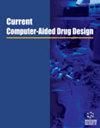Study on the Mechanism of Competing Endogenous Network of 'Scutellaria barbata D.Don-Houttuynia cordata- Radix Scutellariae' in the Treatment of NSCLC based on Bioinformatics, Molecular Dynamics and Experimental Verification
IF 1.6
4区 医学
Q4 CHEMISTRY, MEDICINAL
引用次数: 0
Abstract
Introduction: Non-small cell lung cancer (NSCLC) is the most common type of lung cancer. Traditional Chinese medicine, known for its multi-target and multi-pathway characteristics, offers a potential treatment approach for NSCLC. Objective: This study aimed to explore the mechanism of the competitive endogenous network of 'Scutellaria barbata D.Don-Houttuynia cordata-Radix Scutellariae' in treating NSCLC through bioinformatics analysis and in vitro experiments. objective: This study aimed to explore the mechanism of the competitive endogenous network of 'Scutellaria barbata D.Don-Houttuynia cordata-Radix Scutellariae' in treating NSCLC through bioinformatics analysis and in vitro experiments. Materials and Methods: Various databases and ceRNA networks were utilized to collect and screen components and target genes, molecular docking and molecular dynamics simulations to determine the binding ability of ligand-receptor complexes. In vitro experiments were conducted to validate the effects of active ingredients of 'Scutellaria barbata D.Don-Houttuynia cordata- Radix Scutellariae' on non-small cell lung cancer cell line A549. method: Various databases and ceRNA networks were utilized to collect and screen components and target genes, molecular docking and molecular dynamics simulations to determine the binding ability of ligand-receptor complexes. In vitro experiments were conducted to validate the effects of active ingredients of 'Scutellaria barbata D.Don-Houttuynia cordata-Radix Scutellariae' on non-small cell lung cancer cell line A549. Results: The key target proteins CCL2, EDN1, MMP9, PPARG, and SPP1 were docked well with their corresponding TCM ligands. Among the ligand-receptor complexes, MMP9-Luteolin and MMP9-Quercetin demonstrated the weaking binding force, while the SPP1-Quercetin complex, associated with NSCLC prognosis, exhibited stable structure formation through hydrogen bond interaction during MD simulation. In vitro experiments confirmed the inhibitory effect of Quercetin on SPP1 expression, as well as the proliferation and migration of A549 cells. Conclusion: The findings suggest that 'Scutellaria barbata D.Don-Houttuynia cordata-Radix Scutellariae' may potentially treat lung cancer by suppressing the expression of SPP1. This study provides valuable insights and novel research directions for understanding the mechanism of traditional Chinese medicine in combating lung cancer.基于生物信息学、分子动力学和实验验证的黄芩内源网络竞争治疗 NSCLC 的机制研究
简介:非小细胞肺癌(NSCLC)是最常见的肺癌类型:非小细胞肺癌(NSCLC)是最常见的肺癌类型。中医药具有多靶点、多途径的特点,为治疗非小细胞肺癌提供了一种潜在的方法。研究目的本研究旨在通过生物信息学分析和体外实验,探索'黄芩-D.Don-蕺菜-Radix Scutellariae'竞争性内源性网络治疗 NSCLC 的机制:本研究旨在通过生物信息学分析和体外实验,探讨 "黄芩 D.Don-Houttuynia cordata-Radix Scutellariae "治疗 NSCLC 的竞争性内源性网络机制。材料与方法:利用各种数据库和 ceRNA 网络收集和筛选成分和靶基因,通过分子对接和分子动力学模拟确定配体-受体复合物的结合能力。体外实验验证了 "黄芩 "有效成分对非小细胞肺癌细胞株 A549 的影响:利用各种数据库和 ceRNA 网络收集和筛选成分和靶基因,通过分子对接和分子动力学模拟确定配体-受体复合物的结合能力。体外实验验证了 "Scutellaria barbata D.Don-Houttuynia cordata-Radix Scutellariae "有效成分对非小细胞肺癌细胞系 A549 的影响。结果主要靶蛋白CCL2、EDN1、MMP9、PPARG和SPP1与相应的中药配体对接良好。在配体-受体复合物中,MMP9-木犀草素和MMP9-槲皮素的结合力较弱,而与NSCLC预后相关的SPP1-槲皮素复合物在MD模拟过程中通过氢键相互作用形成了稳定的结构。体外实验证实了槲皮素对 SPP1 表达的抑制作用,以及对 A549 细胞增殖和迁移的抑制作用。结论研究结果表明,"Scutellaria barbata D.Don-Houttuynia cordata-Radix Scutellariae "可通过抑制 SPP1 的表达来治疗肺癌。本研究为了解中药防治肺癌的机制提供了有价值的见解和新的研究方向。
本文章由计算机程序翻译,如有差异,请以英文原文为准。
求助全文
约1分钟内获得全文
求助全文
来源期刊

Current computer-aided drug design
医学-计算机:跨学科应用
CiteScore
3.70
自引率
5.90%
发文量
46
审稿时长
>12 weeks
期刊介绍:
Aims & Scope
Current Computer-Aided Drug Design aims to publish all the latest developments in drug design based on computational techniques. The field of computer-aided drug design has had extensive impact in the area of drug design.
Current Computer-Aided Drug Design is an essential journal for all medicinal chemists who wish to be kept informed and up-to-date with all the latest and important developments in computer-aided methodologies and their applications in drug discovery. Each issue contains a series of timely, in-depth reviews, original research articles and letter articles written by leaders in the field, covering a range of computational techniques for drug design, screening, ADME studies, theoretical chemistry; computational chemistry; computer and molecular graphics; molecular modeling; protein engineering; drug design; expert systems; general structure-property relationships; molecular dynamics; chemical database development and usage etc., providing excellent rationales for drug development.
 求助内容:
求助内容: 应助结果提醒方式:
应助结果提醒方式:


